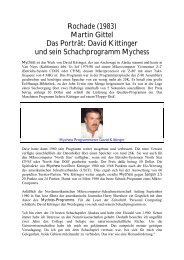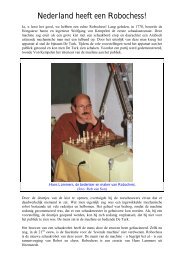07-1977 [D-8601] Fidelity - Chess Challenger 3 Slechts vier ...
07-1977 [D-8601] Fidelity - Chess Challenger 3 Slechts vier ...
07-1977 [D-8601] Fidelity - Chess Challenger 3 Slechts vier ...
You also want an ePaper? Increase the reach of your titles
YUMPU automatically turns print PDFs into web optimized ePapers that Google loves.
<strong>07</strong>-<strong>1977</strong> [D-<strong>8601</strong>] <strong>Fidelity</strong> - <strong>Chess</strong> <strong>Challenger</strong> 3<br />
<strong>Slechts</strong> <strong>vier</strong> maanden na de introductie van de allereerste schaakcomputer ter wereld verscheen<br />
er een verbeterde versie. Zijn naam? <strong>Chess</strong> <strong>Challenger</strong> 3 vanwege zijn 3 instelbare<br />
niveaus. Het schaakprogramma van zijn voorganger de <strong>Chess</strong> <strong>Challenger</strong> 1 heeft 2 KB<br />
ROM. De <strong>Challenger</strong> 3 heeft 4 KB ROM. Maar de belangrijkste verbetering was, dat men<br />
met de gebruikelijke standaard notatie de zetten in kon voeren.<br />
Openingsrepertoire?<br />
Vaak leest men dat er geen boekzetten aanwezig zou zijn, maar de <strong>Challenger</strong> 3 heeft<br />
volgens Rob van Son wél een paar openingszetten! Het bestaat namelijk uit de zetten e4 of d4<br />
en met zwart uit e5 en d5. In tegenstelling tot <strong>Challenger</strong> 1 die maar 1 ply vooruit kan<br />
denken, komt <strong>Challenger</strong> 3 tot maar liefst 3 ply wat nét genoeg is voor een mat in twee<br />
zetten!<br />
<strong>Fidelity</strong> <strong>Chess</strong> <strong>Challenger</strong> 3<br />
(Bild: Heinz-Gerd Lehmann)<br />
Met zwart spelen tegen de <strong>Challenger</strong> 3?<br />
Ook was het nu mogelijk om de computer met de witte stukken (weliswaar aan de bovenkant<br />
van het bord) te laten spelen. Het apparaat geeft dan (bijvoorbeeld) als eerste zet e7-e5 aan. Je<br />
moet deze notatie dan wel even lezen in de Engelse notatie als PQ4 (Pawn to Queen’s 4).<br />
Bedoeld en vertaald in de algebraïsche notatie is dat de zet d2-d4! Erg omslachtig allemaal,<br />
maar nu kon je zelf ook eens met zwart tegen de computer spelen.
Het was duidelijk, de microrevolutie stond nog in de kinderschoenen. Het hoeft verder geen<br />
betoog, dat jaren later óók deze <strong>Challenger</strong> 3 een collectors item is geworden. En vaak met<br />
name door al zijn onvolkomenheden!<br />
If the King is in check, he can not castle at this moment...<br />
Helaas speelt de <strong>Challenger</strong> 3 net als zijn voorganger soms illegaal. Om een voorbeeld te<br />
geven, het apparaat kan soms rokeren als het schaak staat. Dat is mooi te zien op de foto van<br />
Luuk Hofman. <strong>Challenger</strong> 3 staat schaak, maar gaat doodleuk (illegaal) rokeren! Het bewijs<br />
daarvoor is af te lezen in de display, want die geeft 0-0 aan!<br />
Merkmale <strong>Chess</strong> <strong>Challenger</strong> 3<br />
• Hersteller:<br />
<strong>Fidelity</strong> Electronics Ltd.<br />
• Erste Einführung: Juli <strong>1977</strong><br />
• Zugeingabe:<br />
Tastatur<br />
• Zugausgabe:<br />
4-stellige 7-Segment Alphanummerische Anzeige<br />
• Prozessor:<br />
8080 AF<br />
• Takt:<br />
2 MHz<br />
• Prozessortyp:<br />
8 Bit<br />
• ROM: 4 Kbyte (!)<br />
• RAM: 512 Byte (!)<br />
• Bibliothek: 4 Halbzügen (?)<br />
• Spielstufen: 3<br />
• Rechentiefe:<br />
3 Halbzügen<br />
• Initiatief:<br />
spielt aktief (nicht zurückhaltend)<br />
• Ausführung Rochade: eingeschränkt<br />
• Ausführung en passant: eingeschränkt<br />
• DWZ/Elo: ca. 1000<br />
• Programmierer:<br />
Ronald C. Nelson<br />
• Stromversorgung: Netz (120 V - 60 Hz)<br />
• Maße:<br />
31 x 20,5 x 2,8 cm.<br />
• Verwandt: <strong>Fidelity</strong> <strong>Chess</strong> <strong>Challenger</strong> (1)<br />
Spiel / Game<br />
http://www.schaakcomputers.nl/schaakcomputers/<strong>Fidelity</strong>/chess6cc.php?item=3&merk=Fidel<br />
ityCC [Luuk Hofman speelt enkele partijen tegen de <strong>Challenger</strong> 3.]
Hot news about the <strong>Chess</strong> <strong>Challenger</strong> 3<br />
and <strong>Chess</strong> <strong>Challenger</strong> 10 (C)<br />
Date: 17.01.2012<br />
Hi Hein,<br />
Luuk has suggested I should contact you directly. First, thanks a lot and praise for your great<br />
website! It is a tremendous asset for the chess computer collector's community hand has been<br />
an instrumental guideline for building my own collection of <strong>Fidelity</strong> machines. I've also<br />
"lured" Luuk into lending me the more rare machines from his collection for analysis and<br />
ROM readout, in return, I changed all the old electrolytic capacitors in his machines to new<br />
high-quality ones so these machines should now work well into the mid 21st century. There is<br />
a reliability issue with some of the mask ROMs of the time (bit rot) but now having the ROM<br />
dumps, I could repair these machines by replacing the mask ROMs with EPROMs. Believe<br />
me I am a highly qualified electronics engineer and my bread job is actually to design chips<br />
and I am not prone to beginner's errors as some of the other guys placing wrong information<br />
on the web do.<br />
<strong>Fidelity</strong> Electronics <strong>Chess</strong> <strong>Challenger</strong> 3 (<strong>1977</strong>)<br />
(Bild: Heinz-Gerd Lehmann)<br />
For instance, Nils Eilers wrongly read out his CC10 and thought it had a 2Kbyte program. He<br />
even ran it through a disassembler and got pseudo source code that, when assembled, would<br />
again give 2Kbytes of the same object code. This type of fallacy can be done with any<br />
fractional piece of software. The root cause is that these mask ROMs may have mask<br />
programmed locations of some address inputs and chip select inputs. It is wrong to treat them<br />
as EPROMs. Even alike ROMs in the same machine may have somewhat different pin<br />
configurations on the pins in question. It requires great care to read them out correctly.
So, coming to the CC1, CC3 and 10C.<br />
I am absolutely sure the CC1 is a 2Kbyte program, the CC3 is a 4Kbyte program (same<br />
size as the CC10A, CC10B, CC7) and the CC10C is a 8Kbyte program.<br />
I guarantee it and I would stand for it with my name, but alas, I do not want my name to be<br />
published. Why? Very easy - I do not want people asking me to give them the ROM dumps.<br />
This is a legal issue and I simply don't want to bother with that or be dragged into lawsuits. I<br />
also do not want that dozens of collectors ask me to repair or refurbish their machines. I<br />
would consider doing this only on a case by case basis and only for the greatest and most<br />
renowned collectors. Doing such work always involves risk and needs lots of mutual trust and<br />
establishing this basis is impossible on a broad basis (lots of people).<br />
Let's come again to ROM sizes. These always come in powers of 2. So you get 512bytes,<br />
1024 bytes (= 1K byte), 2048 bytes (= 2K bytes) and so on. Multiply that by 8 and you get the<br />
number of bits. Some chess computer manufacturers did that to boast more impressive<br />
numbers. "32768 bits of program ROM and 2048 bits of RAM" looks much more spectacular<br />
than the humble "4Kbytes of ROM and 1/4 Kbyte of RAM" which it actually is.<br />
Regarding the ROM fill grade, the early programs all used up all available ROM space, or<br />
nearly all. I think it's pointless to discern that and give smaller, non-power-of 2 numbers. For<br />
instance, is a copyright message embedded in the ROM part of the chess program or not?<br />
However, if a particular computer combines larger and smaller ROMs, such as an 4Kbyte<br />
ROM and a 8Kbyte ROM, of course the correct software size is 12Kbyte.<br />
So much to say about ROM sizes. In the next weeks, I intend to sum up my findings of<br />
technical data (ROM, RAM size, speed, etc.) and if you are interested, I will provide that data<br />
to you for a cross-check.<br />
Just tell me what you think, and keep up the good work on your webpage.<br />
best regards, ...<br />
***<br />
The author of this article wants to remain anonymous.<br />
___________________________________________________________________________<br />
Date: 17.01. 2012<br />
Hallo ...,<br />
Allererst sehr vielen dank für ihren vielen arbeit an Luuk's schachcomputers. Diesen alte<br />
computers sind von historische werte, und mögen nicht verloren gehen. Ihren erfahrung mit<br />
printer circuit boards nehme ich im ernst, und ich sollte die technische daten von CC3 und<br />
CC10C ändern auf unseren webseite. Auf ihren wunsch sollte ich ihren name in die schachcomputerwelt<br />
auch sicher nicht bekannt machen.<br />
Mit freundlichen Grüße,<br />
Hein Veldhuis
Een advertentie uit november <strong>1977</strong> in het KNSB-orgaan 'Schakend Nederland.' Het is de<br />
firma Bron Electronics uit Tilburg die de allereerste schaakcomputers middels deze advertentie<br />
aanbiedt. Je kunt twee modellen bestellen, de Basic <strong>Chess</strong> <strong>Challenger</strong> (= <strong>Chess</strong><br />
<strong>Challenger</strong> 1) met één niveau en de Master <strong>Chess</strong> <strong>Challenger</strong> (= <strong>Chess</strong> <strong>Challenger</strong> 3) met<br />
drie niveaus.
Advertentie van de firma W. Goes Technische Handelmaatschappij BV (<strong>1977</strong>)
For the game of your life... Take on Computer <strong>Chess</strong> <strong>Challenger</strong> II (<strong>Chess</strong> <strong>Challenger</strong> 3)
<strong>Fidelity</strong> Electronics introduces <strong>Chess</strong> <strong>Challenger</strong> 3 (<strong>1977</strong>)
Advertentie van de firma W. Goes Technische Handelmaatschappij BV (<strong>1977</strong>)<br />
Last Updated on January 19, 2012


![07-1977 [D-8601] Fidelity - Chess Challenger 3 Slechts vier ...](https://img.yumpu.com/39862332/1/500x640/07-1977-d-8601-fidelity-chess-challenger-3-slechts-vier-.jpg)
![01-1981 [E-4551] Applied Concepts - Morphy Encore Na het ...](https://img.yumpu.com/51220743/1/184x260/01-1981-e-4551-applied-concepts-morphy-encore-na-het-.jpg?quality=85)
![10-1987 [H-1501] VEB Mikroelektronik Erfurt - Chess-Master Diamond](https://img.yumpu.com/51155071/1/184x260/10-1987-h-1501-veb-mikroelektronik-erfurt-chess-master-diamond.jpg?quality=85)
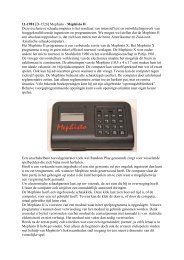
![04-1984 [L-1701] Novag - Presto Novag Art. No. 8210. Een compact ...](https://img.yumpu.com/50703692/1/184x260/04-1984-l-1701-novag-presto-novag-art-no-8210-een-compact-.jpg?quality=85)
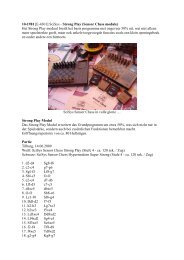
![11-1982 [E-4151] Fidelity - Voice Bridge Challenger III Fidelity ...](https://img.yumpu.com/50359671/1/184x260/11-1982-e-4151-fidelity-voice-bridge-challenger-iii-fidelity-.jpg?quality=85)
![09-1980 [E-3901] Fidelity - Challenger Printer Model: FP. Een zeer ...](https://img.yumpu.com/50108260/1/184x260/09-1980-e-3901-fidelity-challenger-printer-model-fp-een-zeer-.jpg?quality=85)

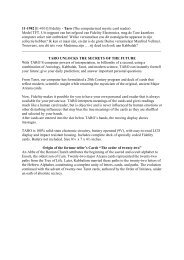
![08-1983 [G-1001] Milton Bradley - Schaakcomputers en ...](https://img.yumpu.com/49507203/1/184x260/08-1983-g-1001-milton-bradley-schaakcomputers-en-.jpg?quality=85)
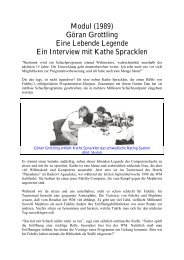
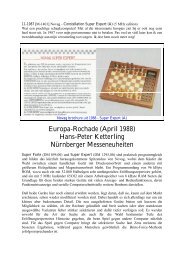
![10-1981 [E-4351] SciSys - Strong Play Plus (Sensor Chess module ...](https://img.yumpu.com/49350295/1/184x260/10-1981-e-4351-scisys-strong-play-plus-sensor-chess-module-.jpg?quality=85)
